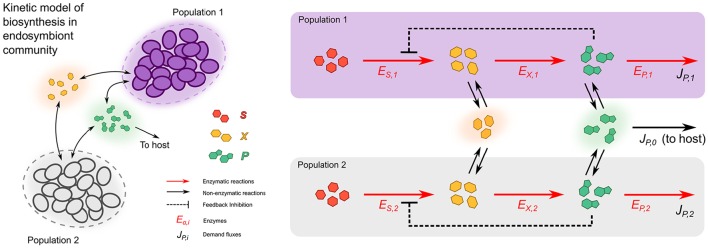Figure 1.
Kinetic model of metabolic complementation. Two cell types (purple and gray) can both potentially produce the product P starting from a substrate S, passing through an intermediate metabolite X. The enzymes can be freely allocated to the pathway's reaction and consumption of P. The intermediate (X) and final (P) metabolites can cross the cell membranes by diffusion. Both bacteria and the host need the final product to grow; leading to consumption rates JP, 0, JP, 1, and JP, 2. In the case of the Buchnera/Serratia/Cinara consortium, the pathway is completely split across the two populations (ES, 2 and EX, 1 are absent).

